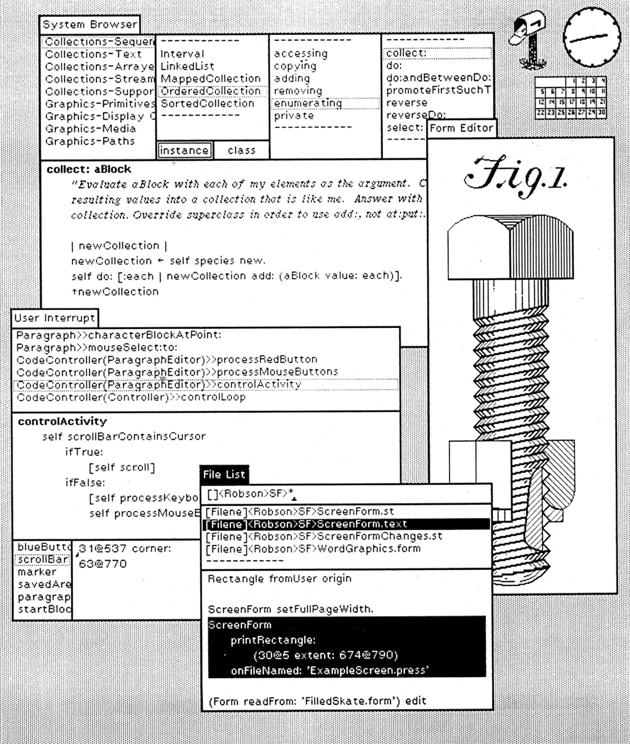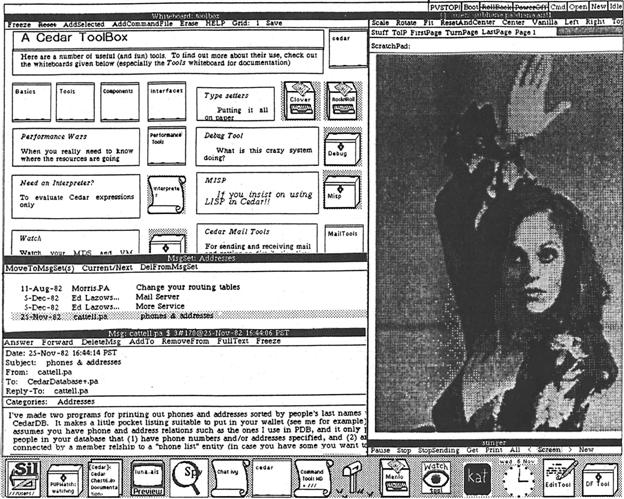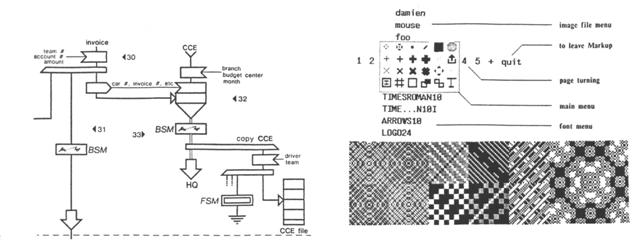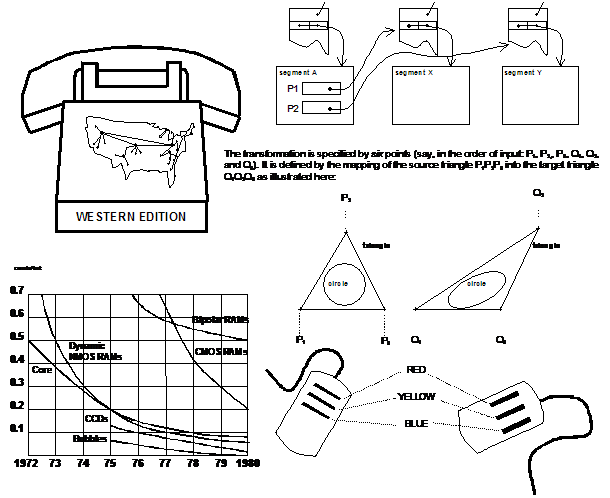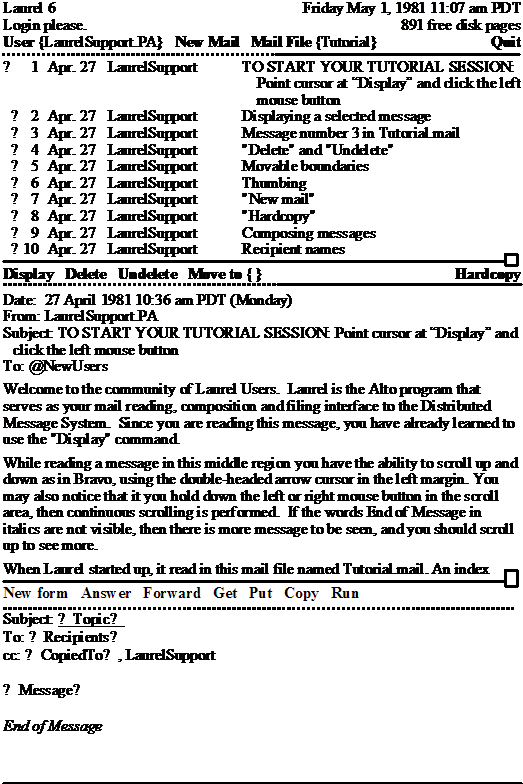March 1 is the birthday of the personal computer. Xerox alto
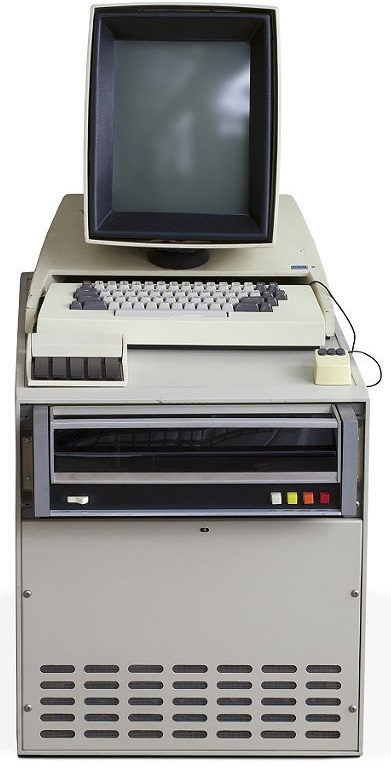 The number of words "first" in the article rolls over.
The number of words "first" in the article rolls over.The first program “Hello, World”, the first MUD game, the first shooter, the first deathmatch, the first graphical interface, the first “desktop”, the first Ethernet, the first three-button mouse, the first ball mouse, the first optical mouse, the first full-page monitor (full-page -sized monitor), the first multiplayer game ... the first personal computer.
Year 1973
In the city of Palo Alto, in the legendary R & D laboratory of Xerox - PARC (Palo Alto Research Center Incorporated), on March 1 there was a release of the machine, which would later be called the world's first personal computer (not a home computer, but for individual use).
')
Alto was a research prototype, not a commercial product. It was supposed that Alto would become a mass-produced machine, but it was never put on stream. However, a total of several thousand Alto were produced, most of which were used at Xerox PARC and various universities.
The cost of one Alto machine is estimated from 12,000 to 40,000 dollars.
Six years after the release of Alto, Jobs will see him and
For building a computer, the team ( Thacker , Kay , Butler , Taylor ) received the Charles Stark Draper Award in 2004, and Chuck Thacker received the Turing Award in 2009.
In October 2014 , the Xerox Alto source code was opened at the Computer History Museum.
Let's try to look under the hood and get acquainted with the developers.
Computer development began in 1972 with a document (“Why Alto?”) Written by Butler Lampson (which was inspired by Douglas Engelbart's oN-Line System (NLS) concept. Chuck Thacker was the designer.
Butler lampson
"Each computer problem is solved by another level of abstraction."
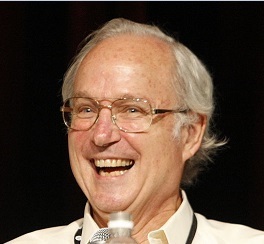 In the 1960s, Lampson participated in the GENIE project at Berkeley, during which the Berkeley Timesharing System time distribution system for the SDS 940 computer from Scientific Data Systems was developed.
In the 1960s, Lampson participated in the GENIE project at Berkeley, during which the Berkeley Timesharing System time distribution system for the SDS 940 computer from Scientific Data Systems was developed.In the 1970s, Lampson became one of the founders of the Xerox PARC laboratory, where he participated in the development of Alto, as well as in the development of laser printing technologies, Ethernet, text processing in WYSIWYG , two-phase commit protocols (2PC), Bravo , the first high-speed local area network (LAN), has developed several significant programming languages, for example, Euclid .
In the 1980s, Lampson joined Digital Equipment Corporation. He currently works in the Microsoft research department, where he is involved in security and anti-piracy issues. He teaches at the Massachusetts Institute of Technology.
Lapson's Memorandum “Why Alto?”
XEROX Inter-Office Memorandum
To CSL Date December 19, 1972
From Butler Lampson Location Palo Alto
Subject Why Alto Organization PARC
This is a book of chapters and others. Alan Kay, who needs about 15-20 interim Dynabooks systems for his education research. Alto has a lot of broader scope, suggest, however. I’m going to begin by outlining the characteristics, and then go on. Every CSL research program.
An Alto system consists of
48-64K 16-bit words of memory (plus parity and perhaps error correction).
A 10 megabyte Diablo disk drive?
A 901 TV line monitor. It is vertically oriented, and it is designed to be driven from a bit map in the memory. It takes 32k (825x620) raster. These dots are about 1.4 mils square. It can be reduced to 1 mil, which gives an 825x860 raster and 44.3K of memory. The square raster can display 8000 5x7 characters with descenders or 2500 beautiful proportionally-spaced characters.
Undecoded keyboard pointing device.
For example, Lisp, Bcpl, MPS, or whatever.
A high-bandwidth (10 MHz) communication interface is not yet specified.
Optionally, a doug clark fixed-font character generator It adds a raster, but adds no rule of thumb, new capability. It should cost about $ 500.
Optionally, a Diablo printer, XGP, or other hardcopy device.
A table is about 45 "wide and 25".
Most importantly, it can be reduced to $ 9.7K by the use of a 2.5 megabyte disk. The cost is not equal among disk, memory, and everything else. We have spent about 1974 CSL member.
PDP-10 can do. Than a time-shared 10, even if the latter is lightly loaded (excepting: lots of floating-point computation). Furthermore, we have the Lisp, Bcpl, and MPS systems. If you’re on your own?
There is no power of computing power. It will be a problem; a Bcpl seems like feasible, but has not been investigated.
A 64K Alto has as many Lisp cells as 32K of PDP-l0 memory. BBN claims page 25k working interval and 30 ms page fault interval. If you’re on track, it’s 32 ms for the 10's drum tracks. Hence, if I’m not counting the 10 for Lisp programs, I’m not counting the speed limit. It is highly plausible to use it in a 32K swap space. Comparable results can be expected for other languages.
This is a list of the last sections:
Alto is more powerful than a VTS terminal connected to Tenex;
If you should prove desirable.
a) Distributed computing. Aloha-like point-to-point packet of the network between the Alto's network, We can then do a large variety of experiments with dozens of machines. It is easy to understand. In particular, it’s not a problem.
b) Office systems. Peter's Lisp-based NLS competitor or the xNLS system. It will not be a problem to optimize the system. This information is obtained from the multi-user xNLS experiments. It may also be possible to escape from Nova dependency; this possibility requires further investigation.
c) Personal computing. If your phone doesn’t have any personal computers, it’s correct to convincingly on Alto. If they are wrong, we can find out why. We should, for example, be able to satisfy users such as Warren and Peter with an Alto. This would also take a bit of a heavy computing load away from Maxc. It is also possible to validate your personal computer (eg, different memory hierarchies). It is important that the memory system is more compact.
d) Graphics. It is a frivolous pattern. It can't do dick shoup's stuff.
Alto competes with SSL are doing. I think this is a good thing, since it wants to excel. Specifically;
a) VTS can be used to control the video switch. It is not possible to control the systems of shared-resource systems. And of course, it’s a computer that uses it.
b) it can be better. It can be used for such large systems as well.
c) which can be replaced by Altos. Those who like the Vova Nova, are secure.
d) The implications of the local network are unclear.
e) Imlacs are wiped out.
[ Source ]
From Butler Lampson Location Palo Alto
Subject Why Alto Organization PARC
1. Introduction
This is a book of chapters and others. Alan Kay, who needs about 15-20 interim Dynabooks systems for his education research. Alto has a lot of broader scope, suggest, however. I’m going to begin by outlining the characteristics, and then go on. Every CSL research program.
2. Characteristics
An Alto system consists of
48-64K 16-bit words of memory (plus parity and perhaps error correction).
A 10 megabyte Diablo disk drive?
A 901 TV line monitor. It is vertically oriented, and it is designed to be driven from a bit map in the memory. It takes 32k (825x620) raster. These dots are about 1.4 mils square. It can be reduced to 1 mil, which gives an 825x860 raster and 44.3K of memory. The square raster can display 8000 5x7 characters with descenders or 2500 beautiful proportionally-spaced characters.
Undecoded keyboard pointing device.
For example, Lisp, Bcpl, MPS, or whatever.
A high-bandwidth (10 MHz) communication interface is not yet specified.
Optionally, a doug clark fixed-font character generator It adds a raster, but adds no rule of thumb, new capability. It should cost about $ 500.
Optionally, a Diablo printer, XGP, or other hardcopy device.
A table is about 45 "wide and 25".
Most importantly, it can be reduced to $ 9.7K by the use of a 2.5 megabyte disk. The cost is not equal among disk, memory, and everything else. We have spent about 1974 CSL member.
PDP-10 can do. Than a time-shared 10, even if the latter is lightly loaded (excepting: lots of floating-point computation). Furthermore, we have the Lisp, Bcpl, and MPS systems. If you’re on your own?
There is no power of computing power. It will be a problem; a Bcpl seems like feasible, but has not been investigated.
A 64K Alto has as many Lisp cells as 32K of PDP-l0 memory. BBN claims page 25k working interval and 30 ms page fault interval. If you’re on track, it’s 32 ms for the 10's drum tracks. Hence, if I’m not counting the 10 for Lisp programs, I’m not counting the speed limit. It is highly plausible to use it in a 32K swap space. Comparable results can be expected for other languages.
3. Applications
This is a list of the last sections:
Alto is more powerful than a VTS terminal connected to Tenex;
If you should prove desirable.
a) Distributed computing. Aloha-like point-to-point packet of the network between the Alto's network, We can then do a large variety of experiments with dozens of machines. It is easy to understand. In particular, it’s not a problem.
b) Office systems. Peter's Lisp-based NLS competitor or the xNLS system. It will not be a problem to optimize the system. This information is obtained from the multi-user xNLS experiments. It may also be possible to escape from Nova dependency; this possibility requires further investigation.
c) Personal computing. If your phone doesn’t have any personal computers, it’s correct to convincingly on Alto. If they are wrong, we can find out why. We should, for example, be able to satisfy users such as Warren and Peter with an Alto. This would also take a bit of a heavy computing load away from Maxc. It is also possible to validate your personal computer (eg, different memory hierarchies). It is important that the memory system is more compact.
d) Graphics. It is a frivolous pattern. It can't do dick shoup's stuff.
4. Competition
Alto competes with SSL are doing. I think this is a good thing, since it wants to excel. Specifically;
a) VTS can be used to control the video switch. It is not possible to control the systems of shared-resource systems. And of course, it’s a computer that uses it.
b) it can be better. It can be used for such large systems as well.
c) which can be replaced by Altos. Those who like the Vova Nova, are secure.
d) The implications of the local network are unclear.
e) Imlacs are wiped out.
[ Source ]
Charles Tecker
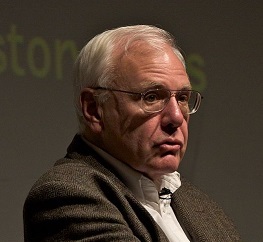 Together with Butler Lampson and other alumni, he founded the company Berkeley Computer Corporation, in which he developed computer electronics. However, the company had no commercial success and Thacker got a job at the Xerox PARC research center.
Together with Butler Lampson and other alumni, he founded the company Berkeley Computer Corporation, in which he developed computer electronics. However, the company had no commercial success and Thacker got a job at the Xerox PARC research center.During the 1970s and 80s, he became one of the developers of the Ethernet protocol, and also made a great contribution to the creation of the first laser printer. In 1983, Thacker founded the research center of the Digital Equipment Corporation (DEC Systems Research Center), and in 1997 he participated in the creation of the Microsoft Research laboratory in Cambridge. After returning to the US, Thacker developed the hardware for the Microsoft Tablet PC, based on his experience with Dynabook at Xerox PARC.
Interview in English
Bob taylor
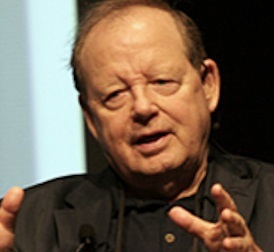 “The Internet is not about technology; it's about communication. The Internet connects people who have shared interests, ideas and needs, regardless of geography. ”
“The Internet is not about technology; it's about communication. The Internet connects people who have shared interests, ideas and needs, regardless of geography. ”He was a director at ARPA's Information Processing Techniques Office from 1965 to 1969, the founder and head of Xerox PARC's Computer Science Laboratory from 1970 to 1983, the founder and head of Digital Equipment Corporation Systems Research Center until 1996.
Alan Kay

The author of the concept of OOP ( "I coined the term" object-oriented ", and that's what I tell you, I did not mean C ++." ) And a laptop.
By the way, Kay said his famous phrase “The best way to predict the future is to invent it” in 1971, and Dennis Gabor (Nobel laureate, creator of holography) - in 63rd. Inventing the Future (1963): "The future cannot be predicted, but futures can be invented." (An investigation about this here .)
TED Video
Alan Kay: "A powerful idea about ideas"
Xerox alto
Iron
Manual for hardware (PDF)
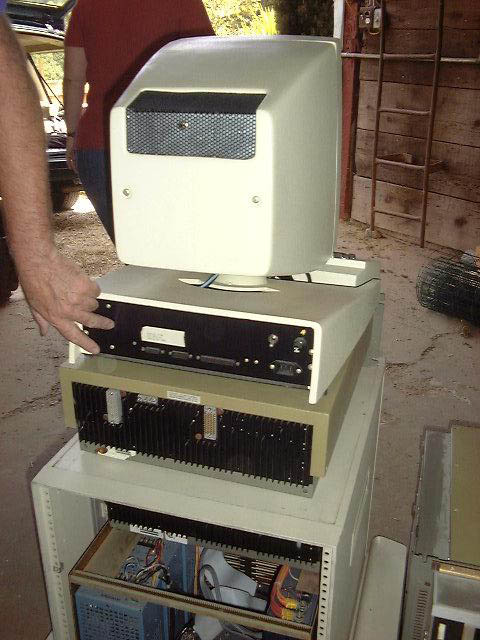
Xerox Alto had 128 KB of RAM (worth $ 4000), expandable to 512 KB, a hard disk with a removable cartridge of 2.5 MB.
Disk drives

Monitor

A monochrome monitor of 606x808 pixels, made in non-traditional portrait orientation, was used to display graphic information.
A rock
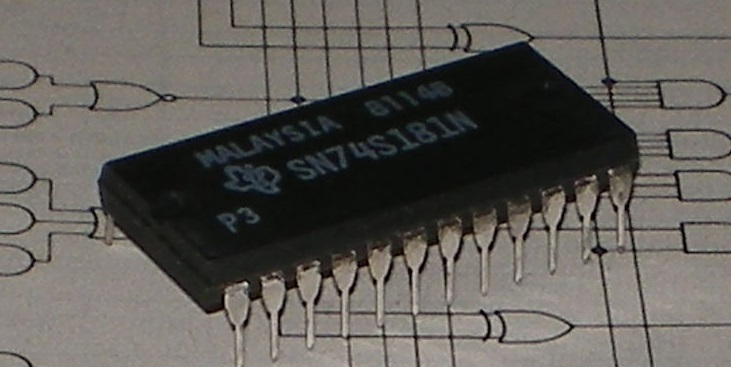
Chip: multichip sectional microprocessor arithmetic logic unit (bit-slice arithmetic logic unit) based on Texas Instruments' 74181 chip with microcode support (up to 16 parallel tasks with fixed priorities). 5.8 MHz CPU
Klava

64-key keyboard
Mouse
All mice used with Alto were three-button. The first mouse was mechanical, with two wheels, set perpendicular to each other. Soon this model was replaced by a mouse with a ball, invented by Bill English. Later, an optical mouse appeared, first using white light and then infrared radiation. The buttons on the first mice were located above each other, and not next to each other, as is customary now.

Engelbart's ideas implemented in the real world - a mouse and a chord keyboard :

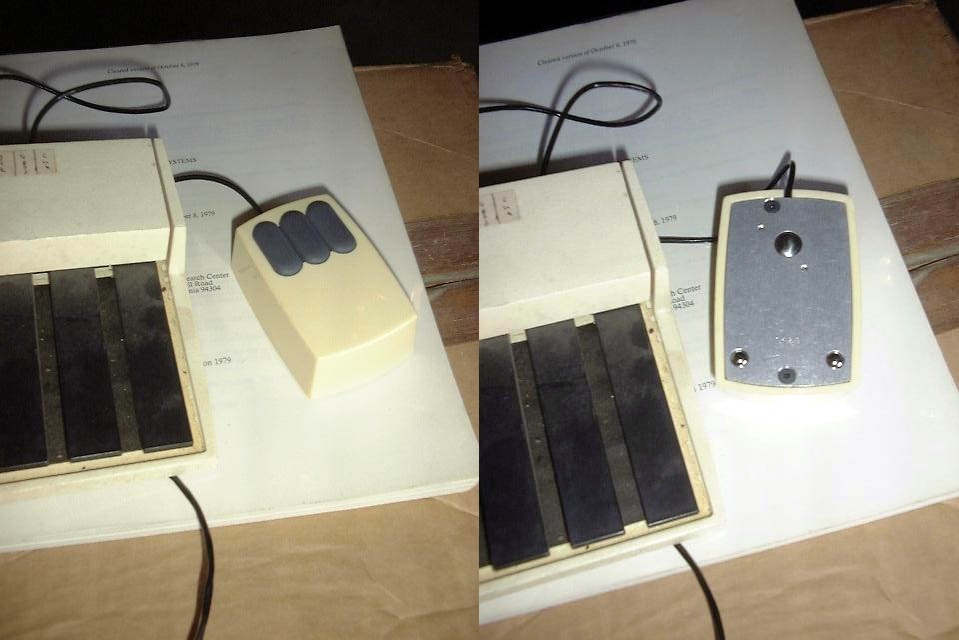

[ Source ]
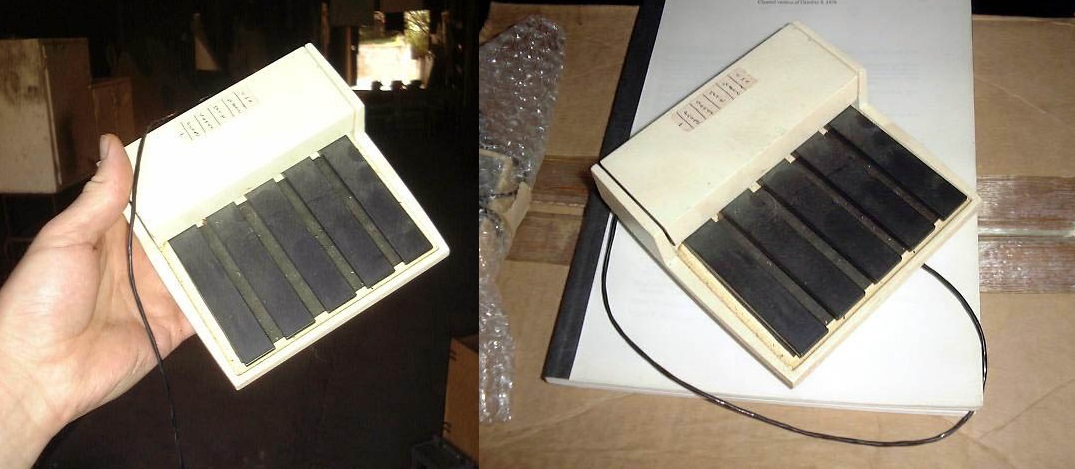
[ Source ]
Network card
Ethernet


[ source ]
Software
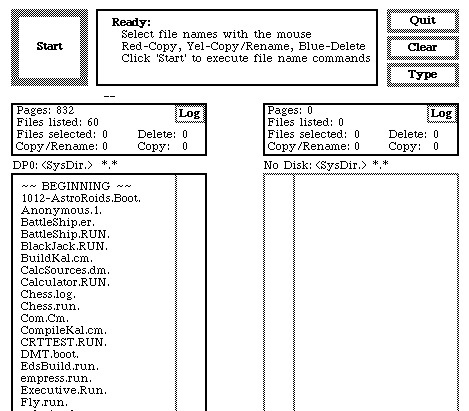
The first programs for Alto were written in the BCPL programming language (by the way, the first program “Hello world” and the first MUD were written on BCPL ), then Mesa was used , which was not widely spread outside the walls of PARC, but had an impact on some later languages, for example, Modula. On the Alto keyboard, there was no underline key, which was adapted for the left arrow symbol, which was used in the Mesa language as an assignment operator. This feature of the Alto keyboard could have caused the CamelCase ID naming style. Another feature of Alto was the ability for the user to program the processor microcode directly.
Despite the relatively small amount of RAM, for Xerox Alto, programs with graphic menus, icons, and other elements that became familiar only with the advent of Mac OS and Microsoft Windows operating systems were developed and used.
- Bravo and Gypsy - the first WYSIWYG word processors
- Laurel and Hardy - network E-mail clients
- Markup and Draw - graphic editors (bitmap editors)
- Neptune - file manager
- FTP and chat utilities
- Games - Chess, Pinball, Alto Trek game by Gene Ball
- Sil - vector graphics editor for integrated circuits and printed circuit boards.
- Officetalk experimental forms-processing system
- Programming Languages - BCPL, LISP, Smalltalk, Mesa, and Poplar
Some pictures / screenshots of software
more screenshots of programs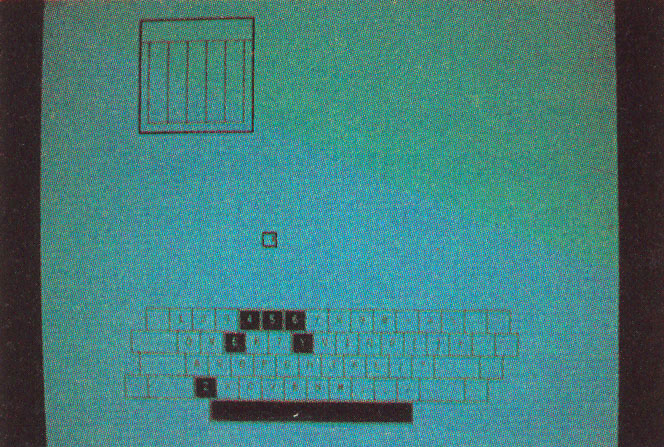
Display from the keyboard-test program:
If you’d like to make it, you can’t be pressed simultaneously. In the display, the black keys are being held down. The small square above the keyboard represents the mouse (see photo 4); one mouse key is also pressed.
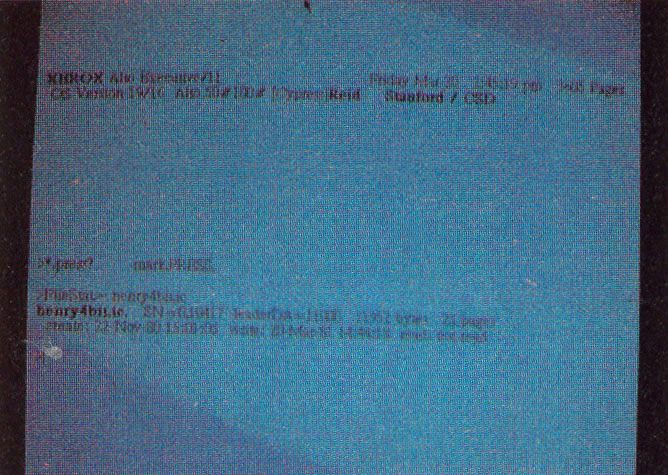
This is an example of a no-show and display.
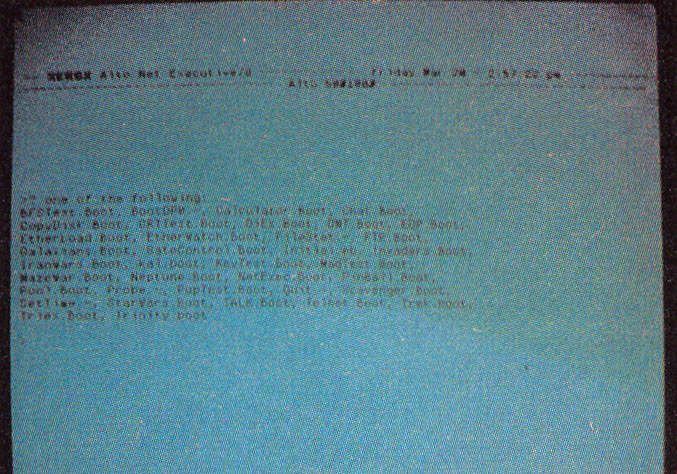
NetExecutive (similar to the Alto Executive, but it allows access to resources on the Ethernet.
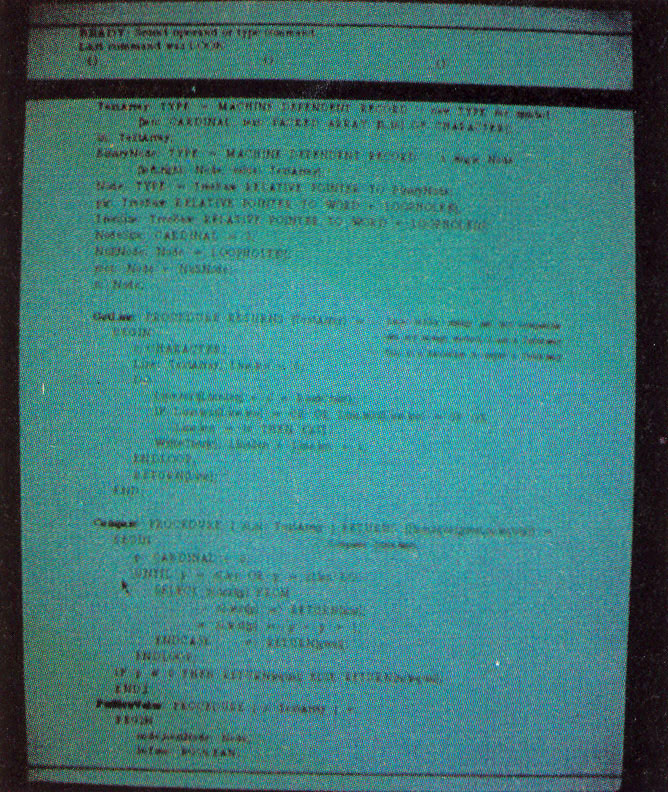
Typical Mesa program being edited by Bravo; note the different typefonts used in the program listing.

Directory from the Neptune directory editor. In black have been selected for further operations such as printing or erasure. The cursor is displayed as a cross in a circle.
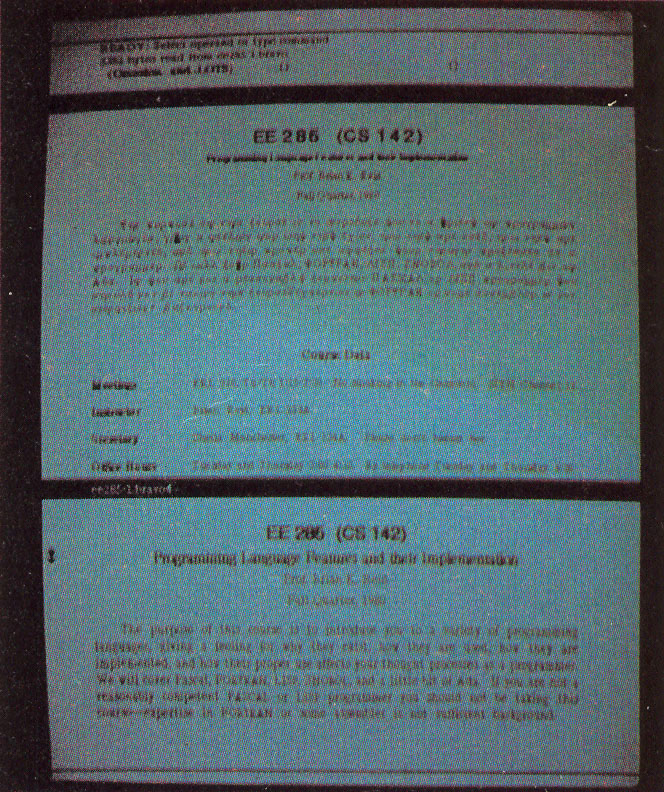
Bravo's ability to change fonts (there are hundreds of fonts for the Alto, from Gothic to Elvish Runes; The document is shown in the top window.
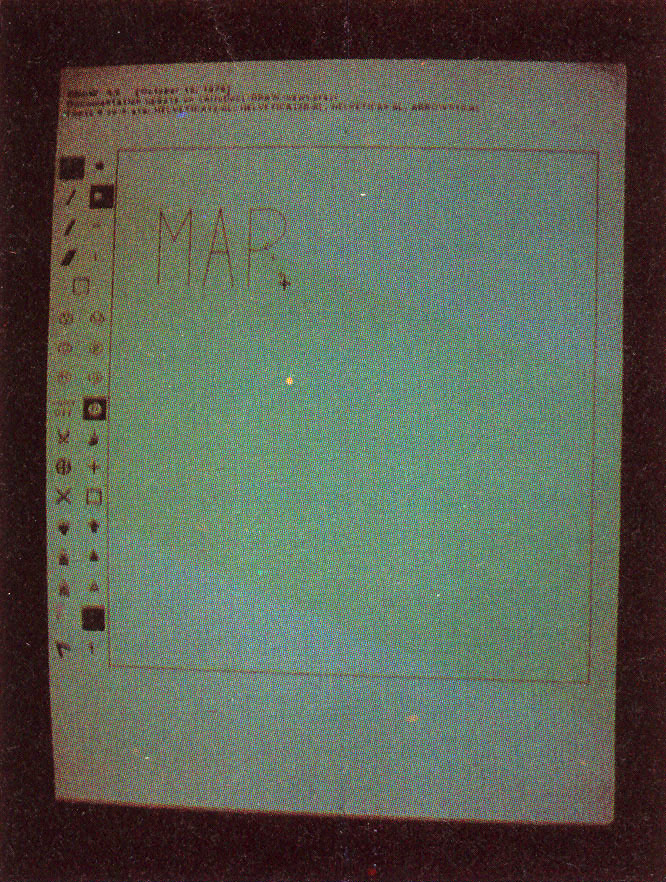
Curves are lines.
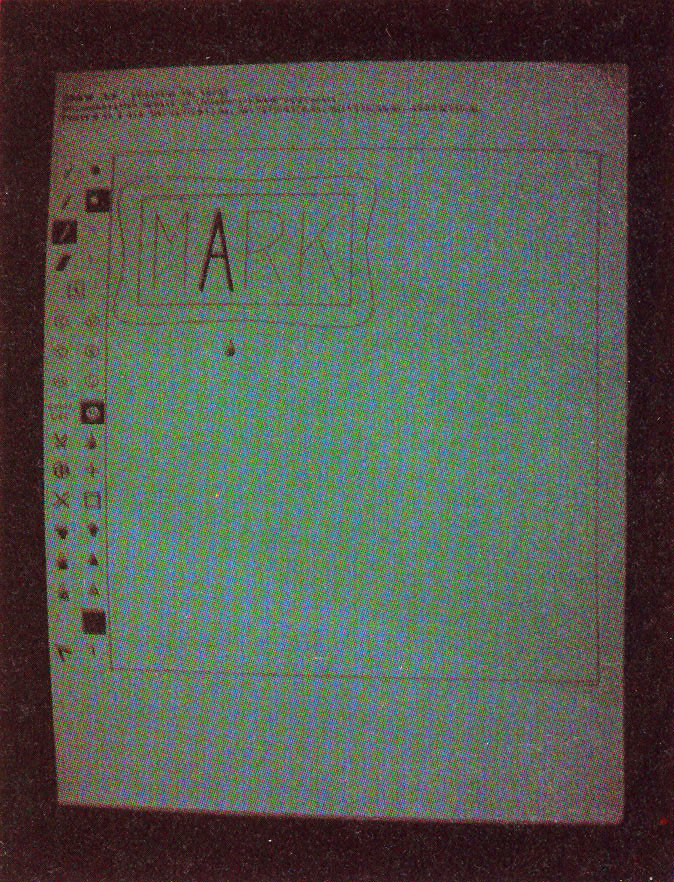
Lines may be “painted” with a brush of brushstrokes (the cursor has changed to a small paintbrush).
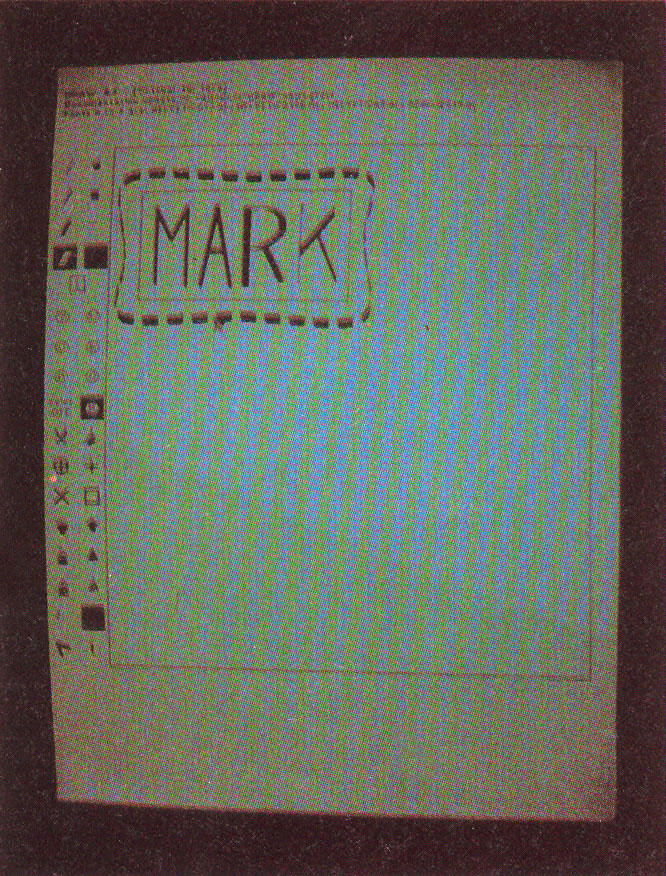
Texture is given to the lines; dotted lines are created with the scissors cursor.
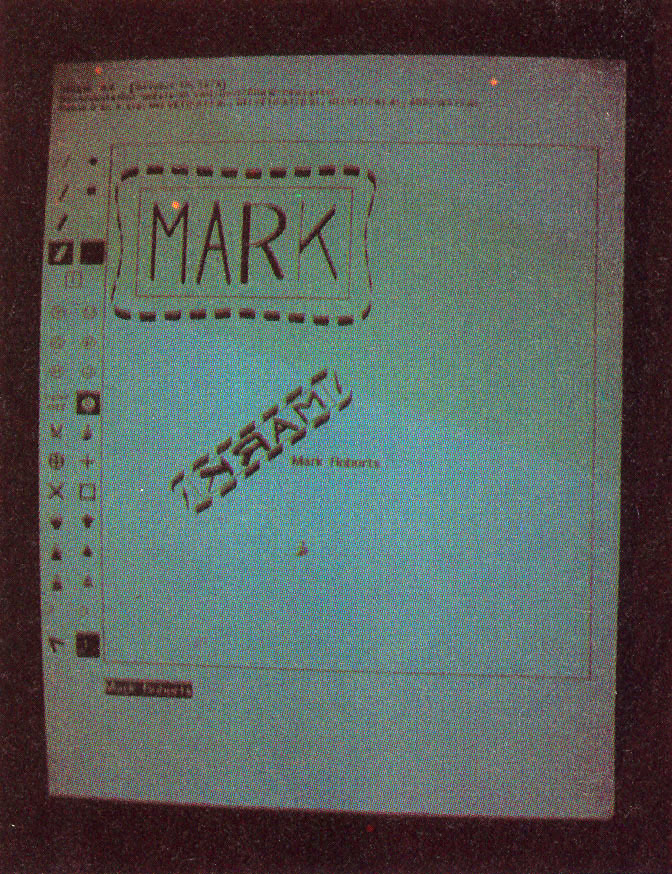
Picture may be mathematically manipulated; a new figure may have been created by reversing, tilting, or stretching a copy of the original.
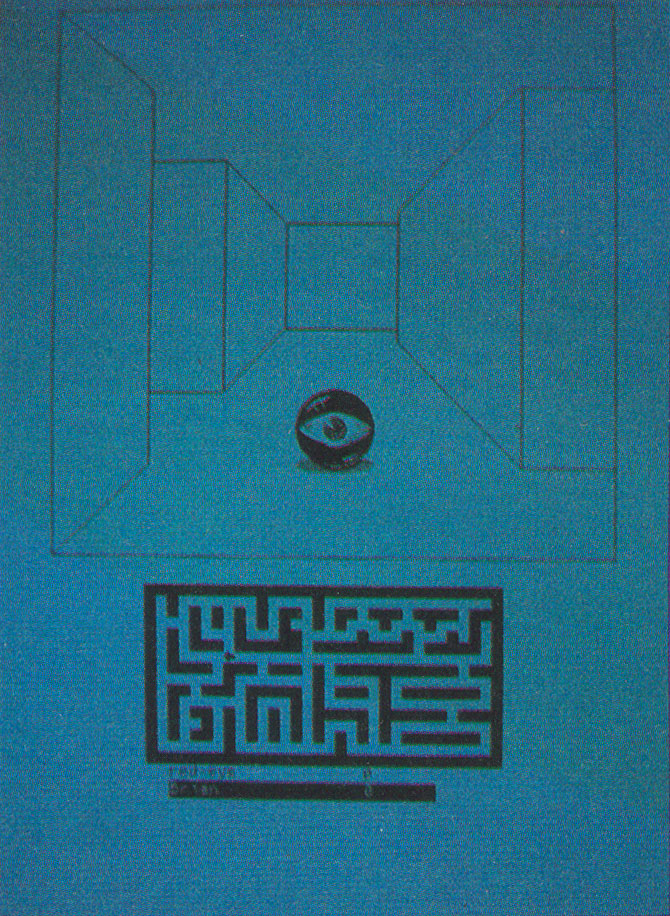
The opponent represents the person. The game at any time.
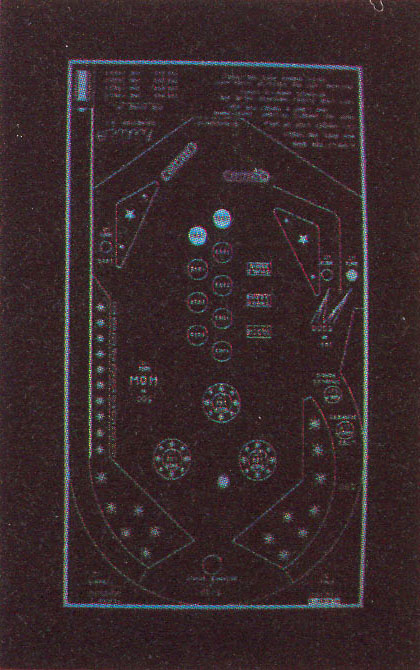
The Pinball game:
Flippers are actuated by the two shift keys; an alto port can be connected to provide bells and buzzer sounds.
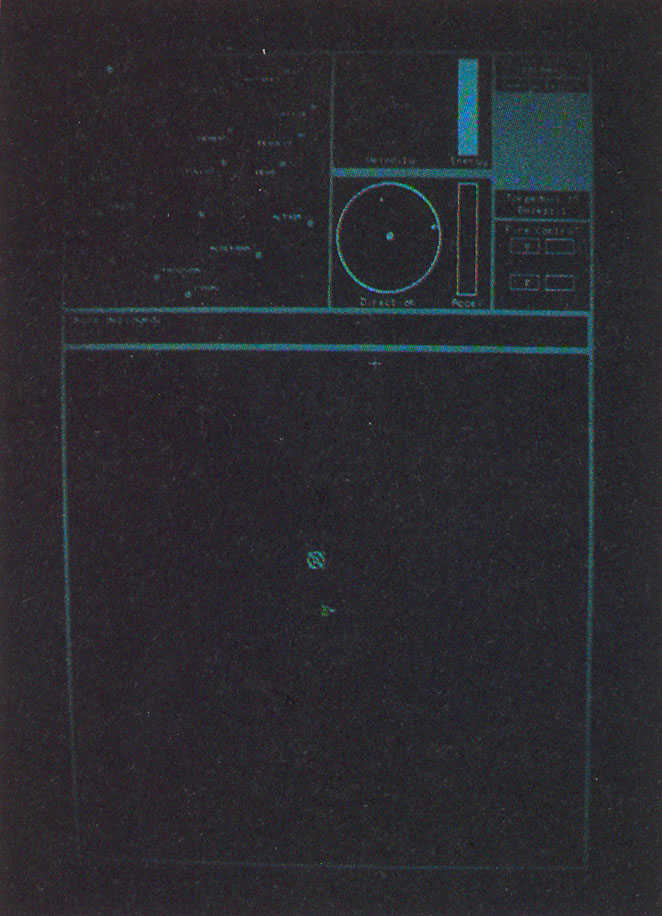
The multiplayer Trek program:
This game is played entirely under mouse control. Shows a short-range sensor scan; above is the long range display, and navigation and weapons controls.

Cedar environment on the Alto
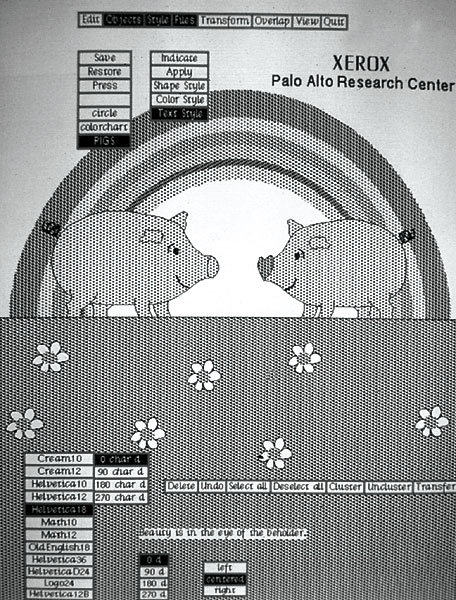
Famous "rainbow" screen on an Alto

Display from the keyboard-test program:
If you’d like to make it, you can’t be pressed simultaneously. In the display, the black keys are being held down. The small square above the keyboard represents the mouse (see photo 4); one mouse key is also pressed.

This is an example of a no-show and display.

NetExecutive (similar to the Alto Executive, but it allows access to resources on the Ethernet.

Typical Mesa program being edited by Bravo; note the different typefonts used in the program listing.

Directory from the Neptune directory editor. In black have been selected for further operations such as printing or erasure. The cursor is displayed as a cross in a circle.

Bravo's ability to change fonts (there are hundreds of fonts for the Alto, from Gothic to Elvish Runes; The document is shown in the top window.

Curves are lines.

Lines may be “painted” with a brush of brushstrokes (the cursor has changed to a small paintbrush).

Texture is given to the lines; dotted lines are created with the scissors cursor.

Picture may be mathematically manipulated; a new figure may have been created by reversing, tilting, or stretching a copy of the original.

The opponent represents the person. The game at any time.

The Pinball game:
Flippers are actuated by the two shift keys; an alto port can be connected to provide bells and buzzer sounds.

The multiplayer Trek program:
This game is played entirely under mouse control. Shows a short-range sensor scan; above is the long range display, and navigation and weapons controls.

Cedar environment on the Alto

Famous "rainbow" screen on an Alto
Games
Alto Trek - the first multiplayer game
You control a star ship in one of three races: Earthlings , Klingons or Romulan
Manual on the game
Maze
The first deathmatch, the first first-person view.
and:
- Astro-roids
- Chess
- Galaxians
- Mazewar
- Missile Command
- Rinky Dink (Clint Parker's pinball program)
- Space war
Screenshots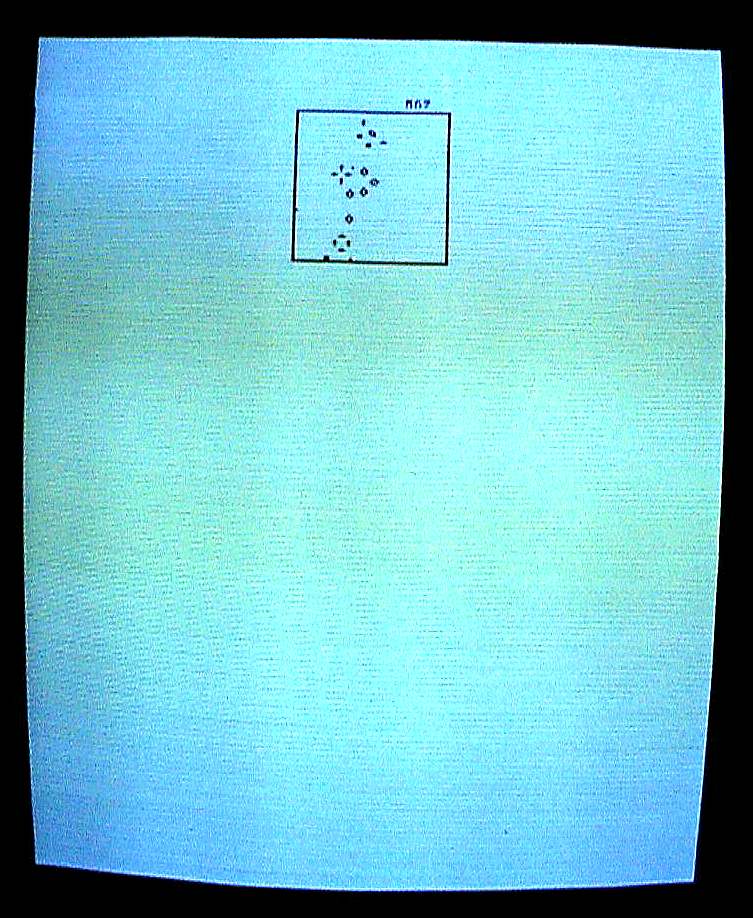
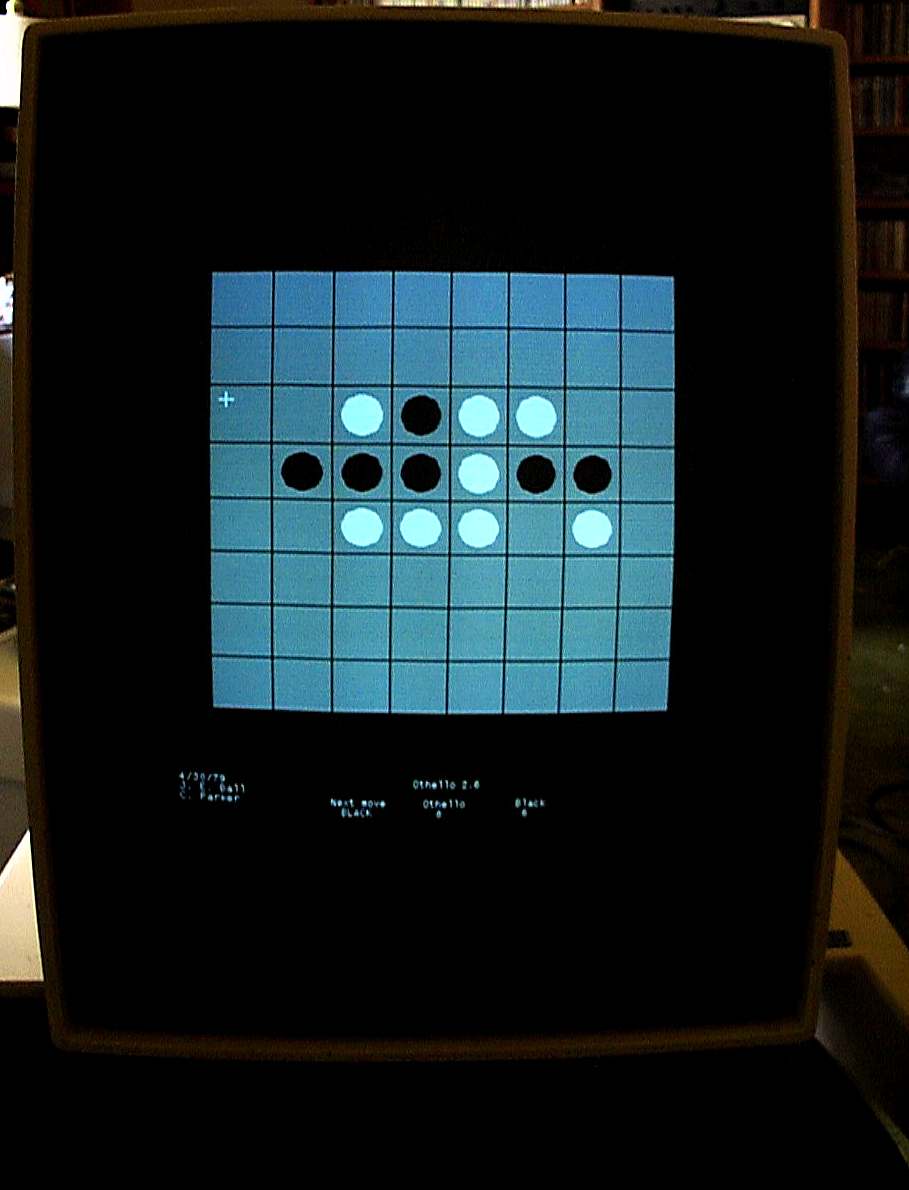
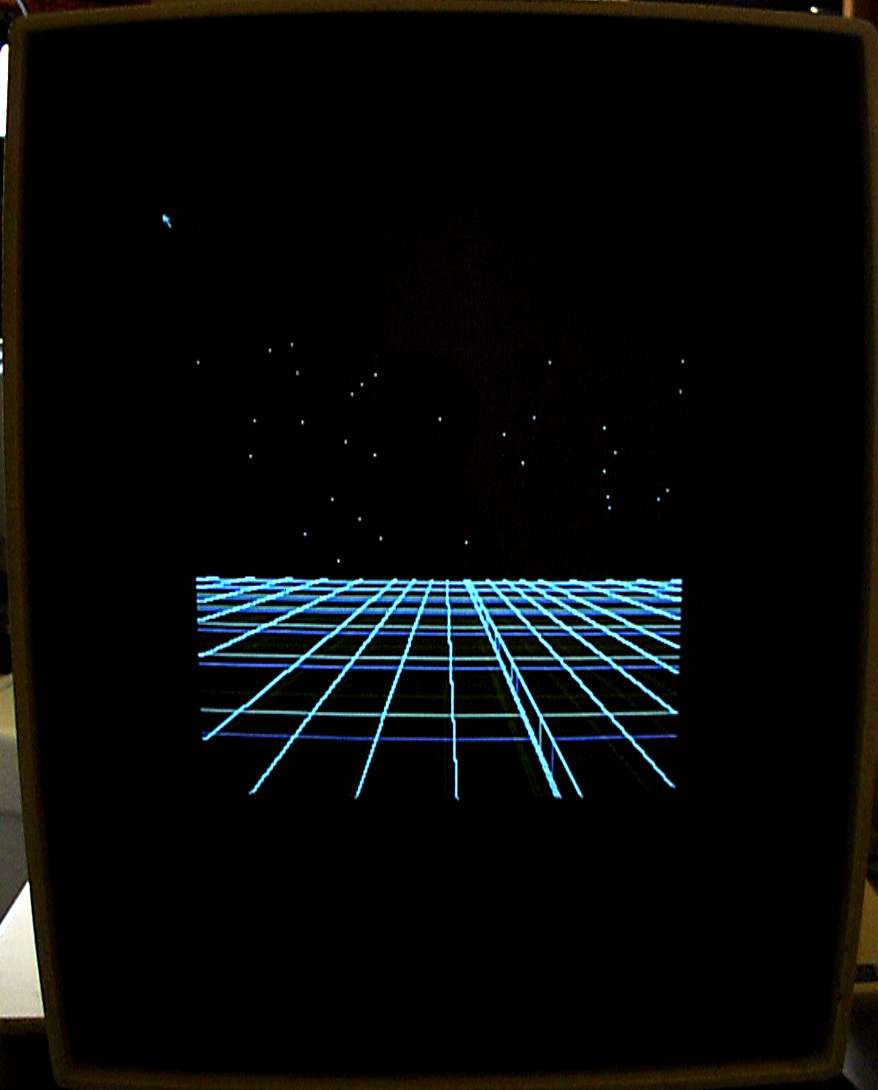
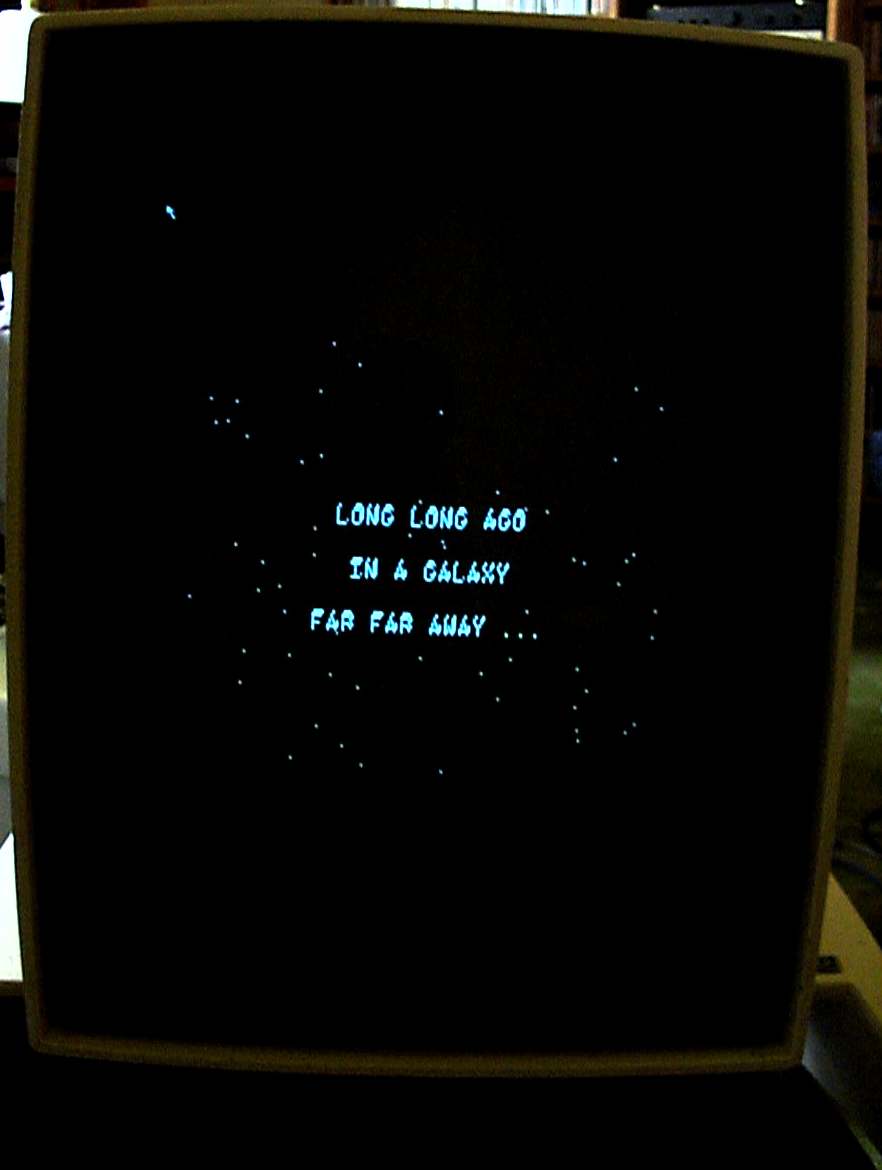
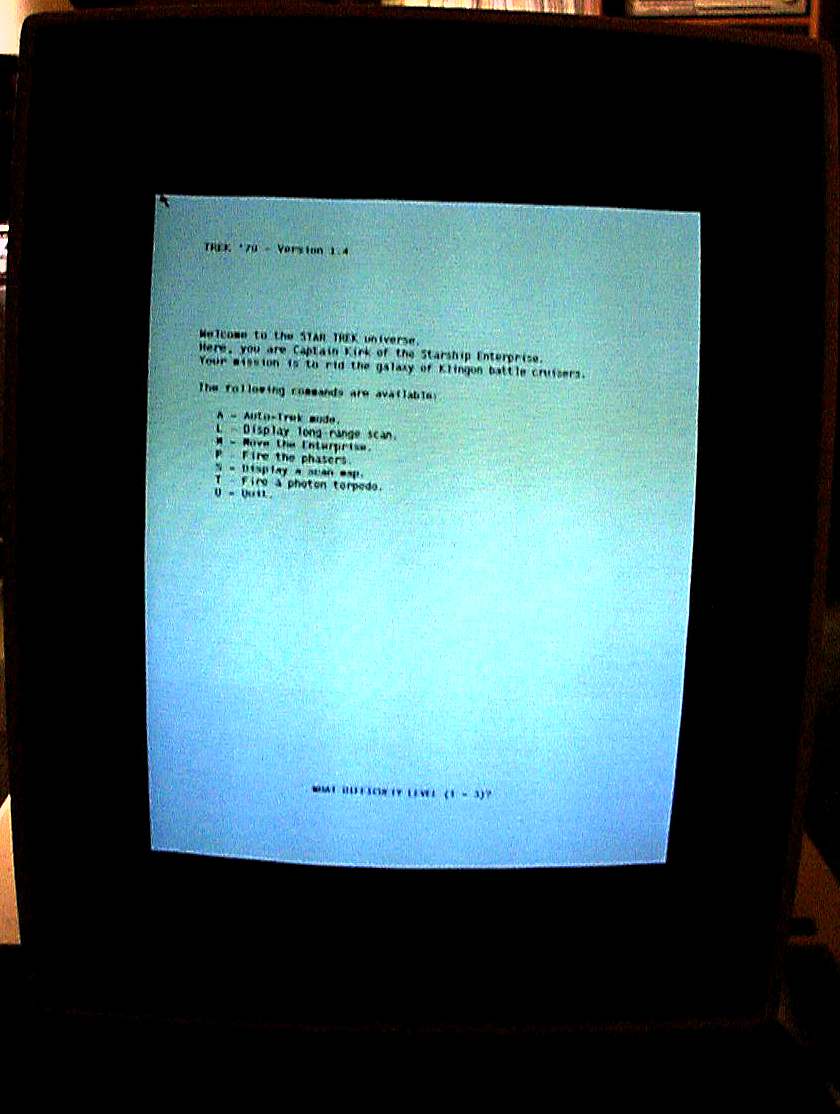

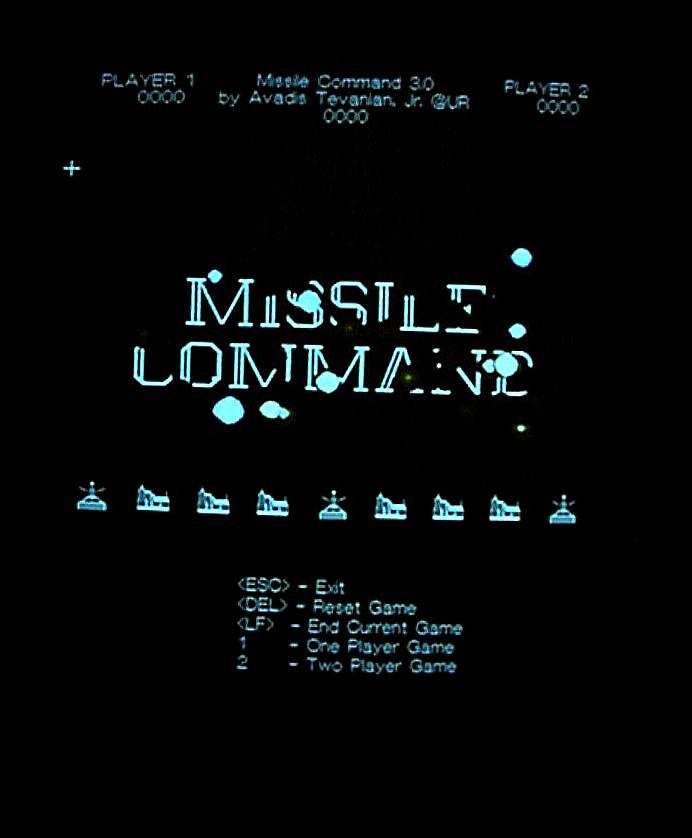







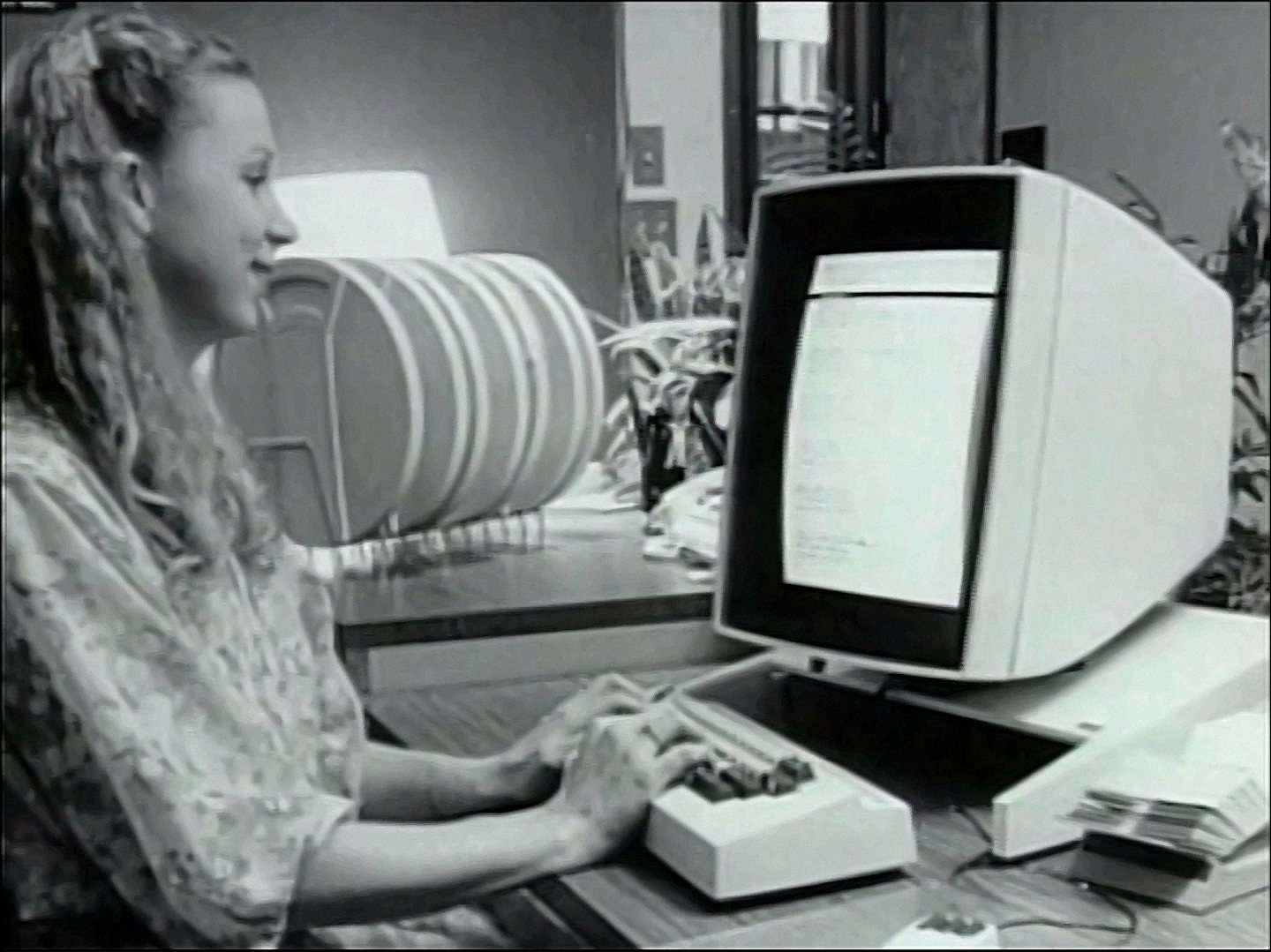
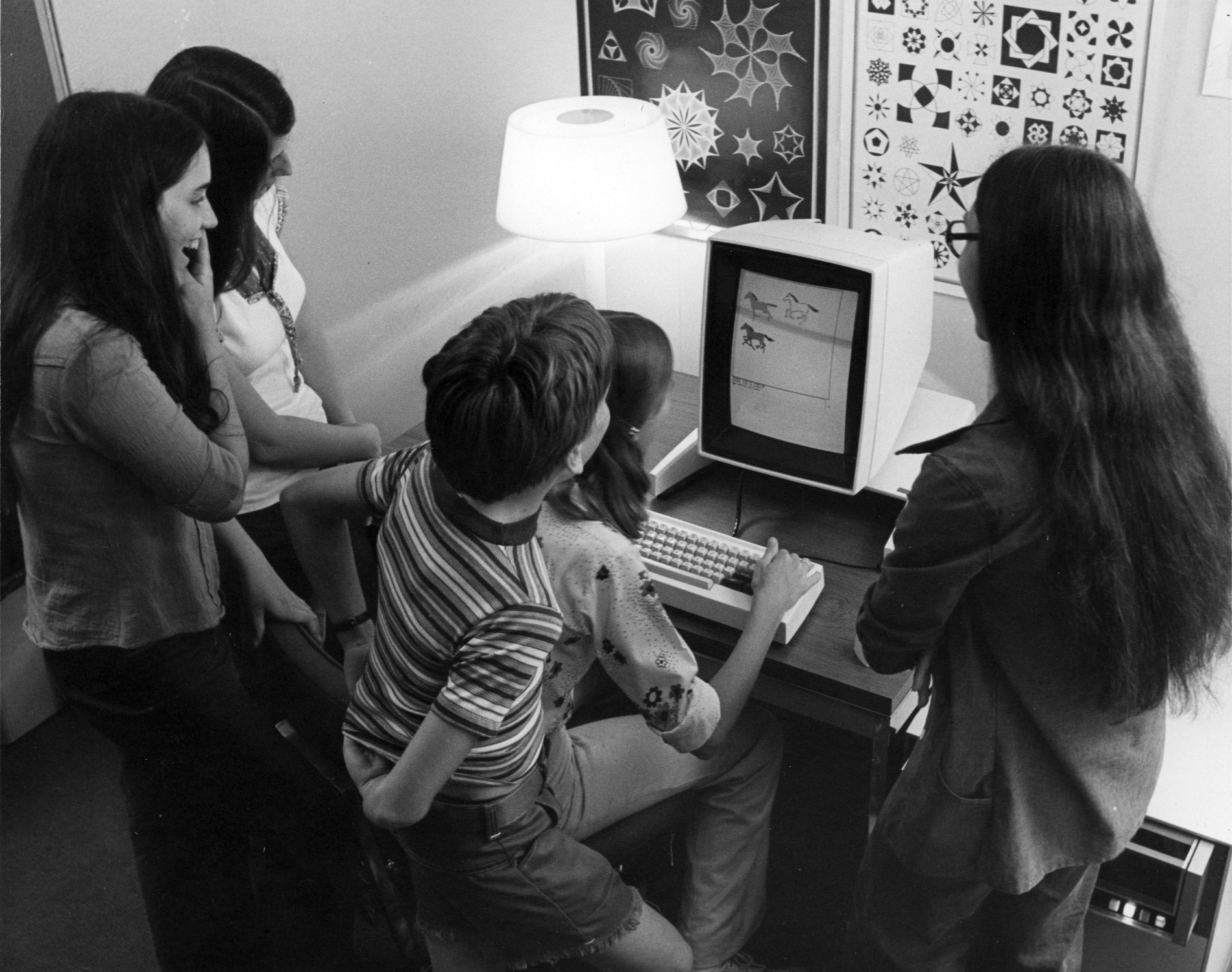
That's why you need computers
UPD
I did not have time to look, but I think it will be useful:
year 2001. The Xerox Alto: A Personal Retrospective
Conclusion
“Do not doubt that a small group of thinking and selfless people can change the world. In fact, it is only they who introduce these changes. ” Margaret Mead
In my opinion, it is incredibly cool to be a witness (and even more so a participant) of creating new and interesting things. I was lucky to be close to a group of young and daring people who created “Dial” (the first anti-cafe), although not an IT product, but still very driving and cool. I talked a bit with the developers of Cybiko , they have a lot of interesting stories. I enjoyed watching the series “Halt and Catch Fire” . Who knows links to useful materials, share, and if you yourself took part in creating a new one - write in the comments, I will be grateful.
Together with the company Edison we start the spring marathon of publications.
I will try to get to the primary sources of IT-technologies, to understand how they thought and what concepts were in the minds of the pioneers, what they dreamed about, how they saw the world of the future. Why did you think “computer”, “network”, “hypertext”, “intelligence amplifiers”, “collective problem solving system”, what meaning did they put into these concepts, what tools they wanted to achieve a result.
I hope that these materials will serve as an inspiration for those who are wondering how to go “from Zero to Unit” (to create something that had never happened before). I would like IT and “programming” to stop being just “coding for the sake of dough”, and recall that they were conceived as a lever to change the
0 March. Seymour papert
March 1. Xerox alto
March 2, "Call Jake." NIC and RFC history
March 3, Grace "Grandma COBOL" Hopper
March 4 Margaret Hamilton: "Guys, I'll send you to the moon"
March 5, Hedy Lamarr. And in the movie naked to play and torpedo the bullet into the enemy
March 7 Gorgeous Six: girls who had a thermonuclear explosion calculated
March 8, "Video Games, I'm your father!"
Source: https://habr.com/ru/post/277803/
All Articles
